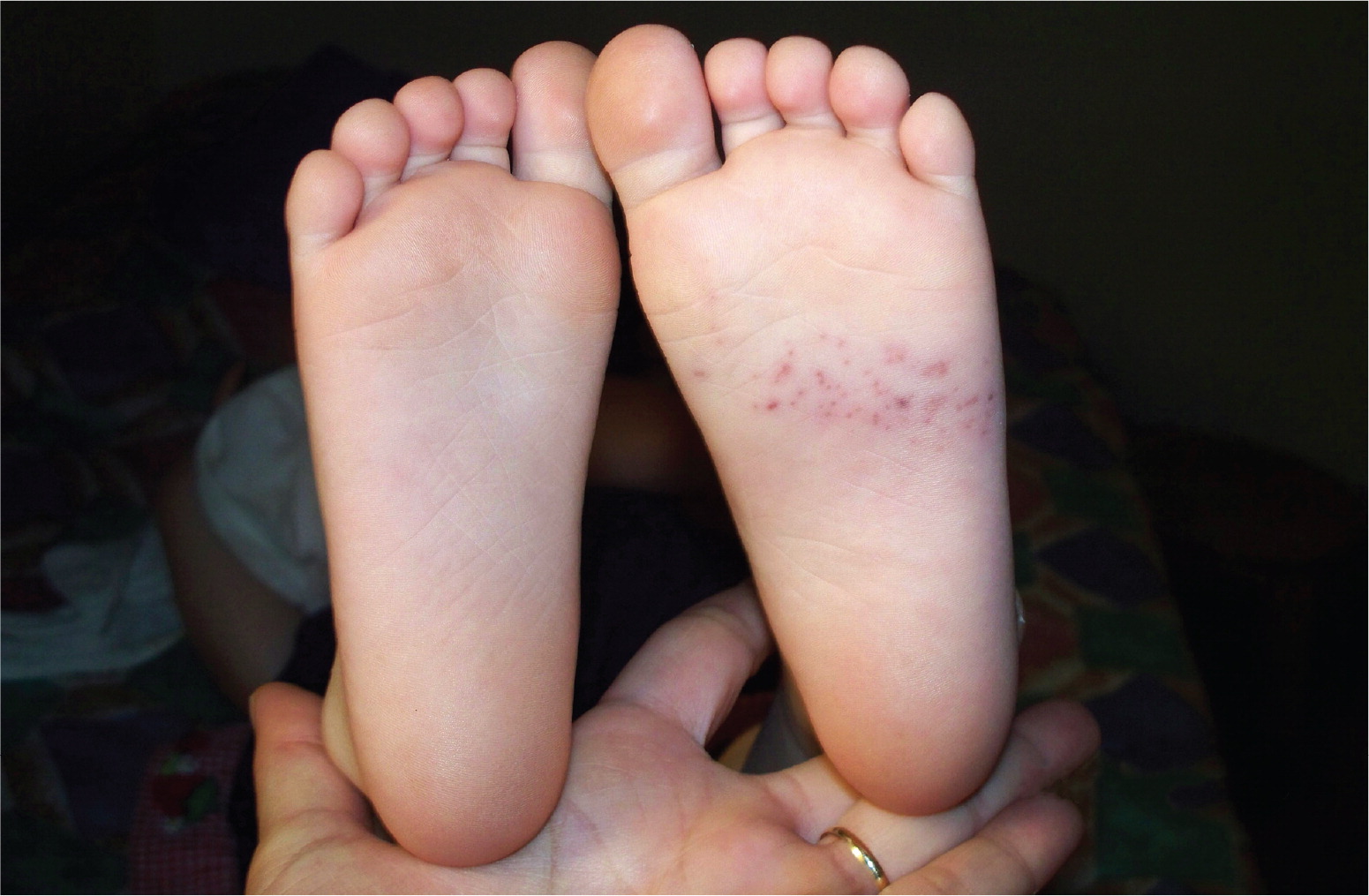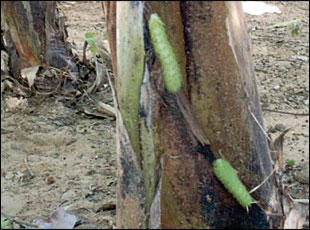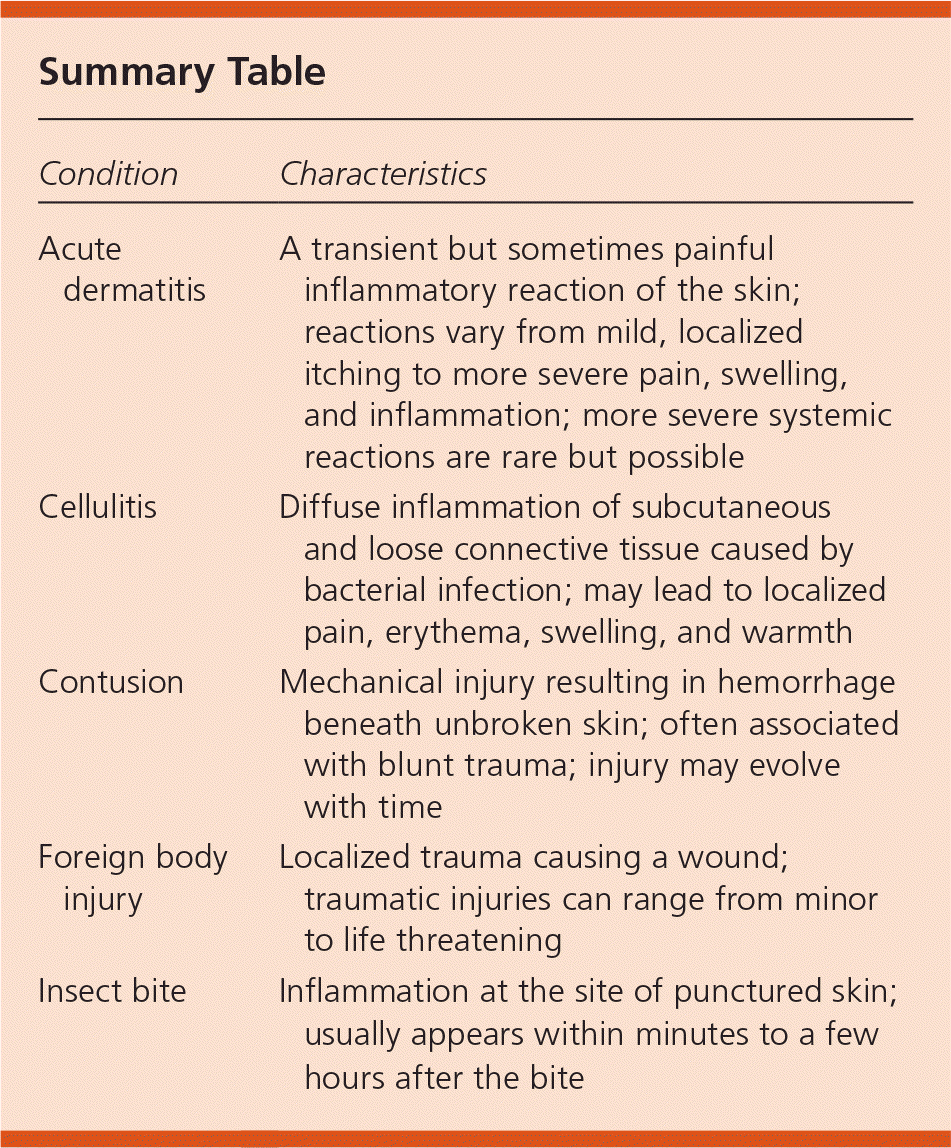
Am Fam Physician. 2011;83(2):201-202
Author disclosure: Nothing to disclose.
During a trip to Brazil, a two-year-old girl presented with sudden foot pain while playing in the dirt near a tree. Her mother saw no glass, nails, or insects on the ground where the child was playing. The sole of the child's left foot initially turned white in a linear pattern. Three hours later, the foot was erythematous with multiple petechiae (Figure 1). Swelling progressed from the sole to the rest of the foot, and then to the ankle with linear streaks. The child could not put weight on the foot. Four hours after the injury, she developed a fever of 103° F (39.4° C) and was difficult to console. Oral and topical antibiotics and acetaminophen were ineffective.

Question
Discussion
The answer is A: Acute dermatitis from a caterpillar sting. Further investigation found lime green caterpillars feeding on the leaves of the tree near where the child was playing (Figure 2). Caterpillars usually camouflage themselves on tree leaves.

The family returned to the United States nine days after the injury, and the mother took the child to their family physician. Physical examination revealed swelling, purulent pockets, and multiple black caterpillar hairs/spines on the bottom of the foot. The physician discontinued the antibiotics and cleaned the area with soapstone (localized debridement). The child was able to walk on the foot after two days, and her fever subsided.
Stinging caterpillars have specialized spines that contain poison glands. If the spines penetrate the skin, toxins spread on the surface of the skin, causing dermatitis.1,2 Reactions vary from mild, localized itching to more severe pain, swelling, and inflammation. Occasionally, a systemic response with diarrhea occurs. There have been reports from around the world of reactions from caterpillar stings, including dermatologic, pulmonary, and other systemic reactions.2,3
Cellulitis is a diffuse inflammation of subcutaneous and loose connective tissue caused by bacterial infection. It can lead to localized pain, erythema, swelling, and warmth. Typical treatment involves appropriate antibiotic therapy.6
Contusions are usually caused by mechanical injury resulting in hemorrhage beneath unbroken skin. They are often associated with blunt trauma, and the injury may evolve over time.
Foreign body injuries are associated with localized trauma that causes a wound. Traumatic injuries can range from minor to life threatening.

| Condition | Characteristics |
|---|---|
| Acute dermatitis | A transient but sometimes painful inflammatory reaction of the skin; reactions vary from mild, localized itching to more severe pain, swelling, and inflammation; more severe systemic reactions are rare but possible |
| Cellulitis | Diffuse inflammation of subcutaneous and loose connective tissue caused by bacterial infection; may lead to localized pain, erythema, swelling, and warmth |
| Contusion | Mechanical injury resulting in hemorrhage beneath unbroken skin; often associated with blunt trauma; injury may evolve with time |
| Foreign body injury | Localized trauma causing a wound; traumatic injuries can range from minor to life threatening |
| Insect bite | Inflammation at the site of punctured skin; usually appears within minutes to a few hours after the bite |
